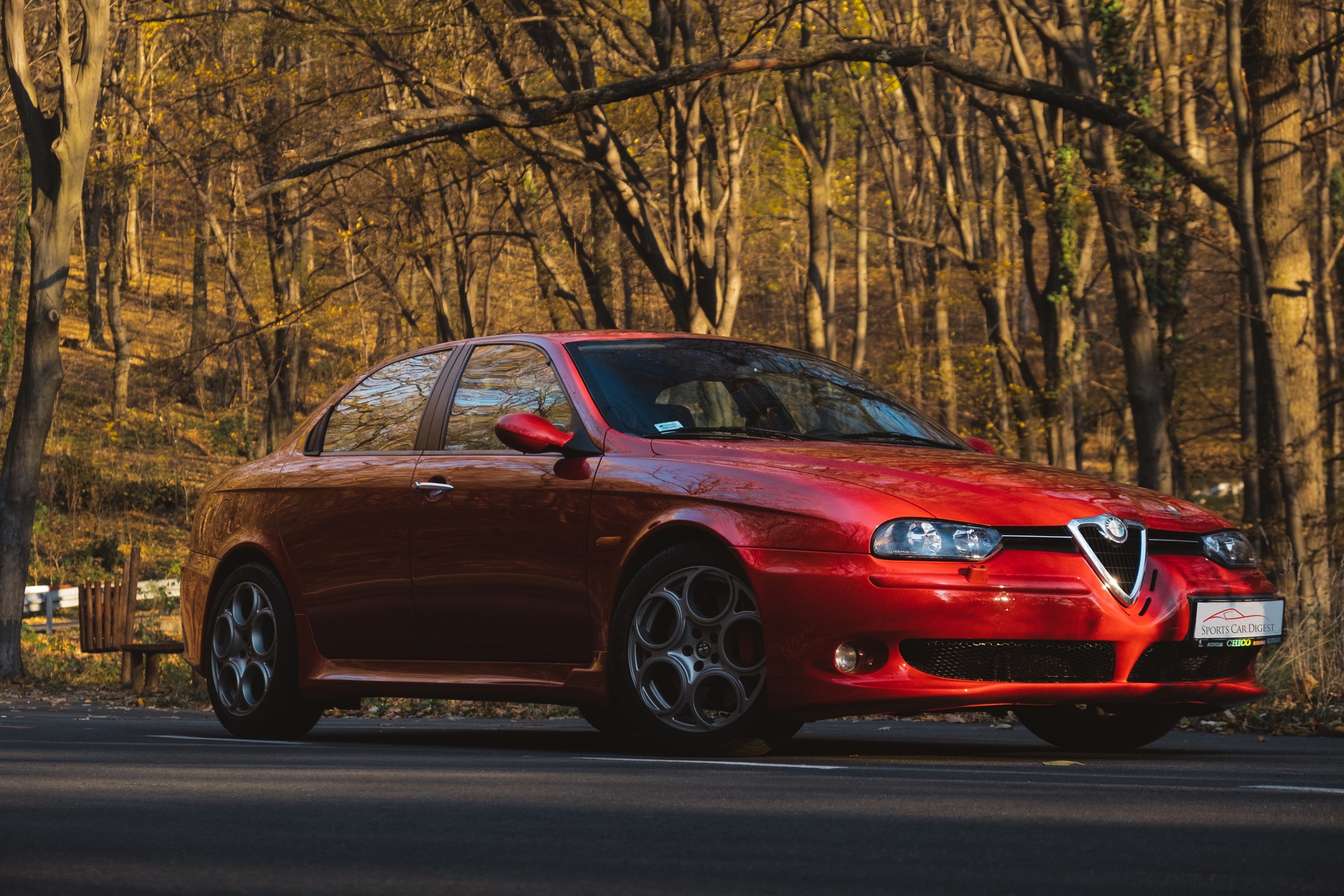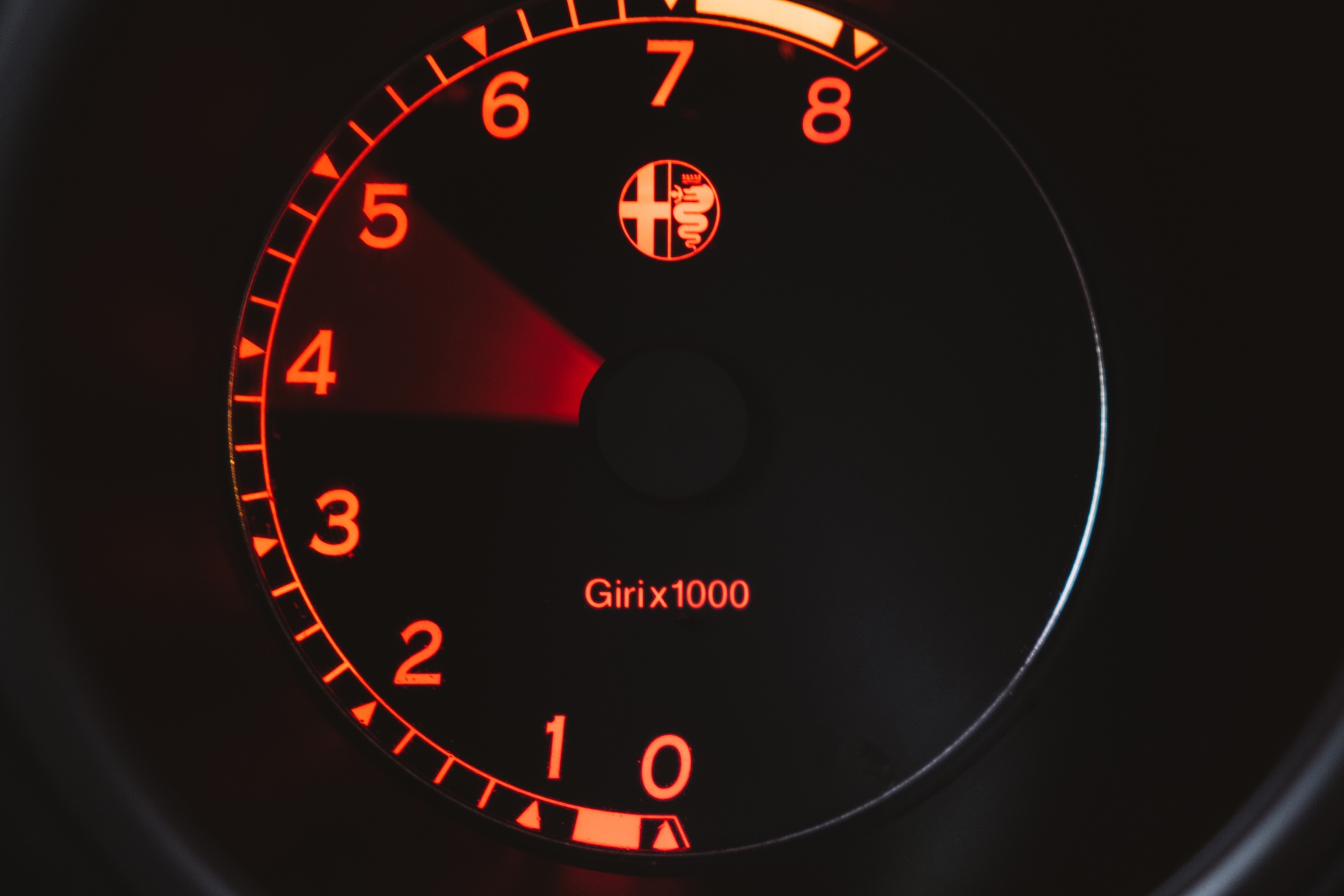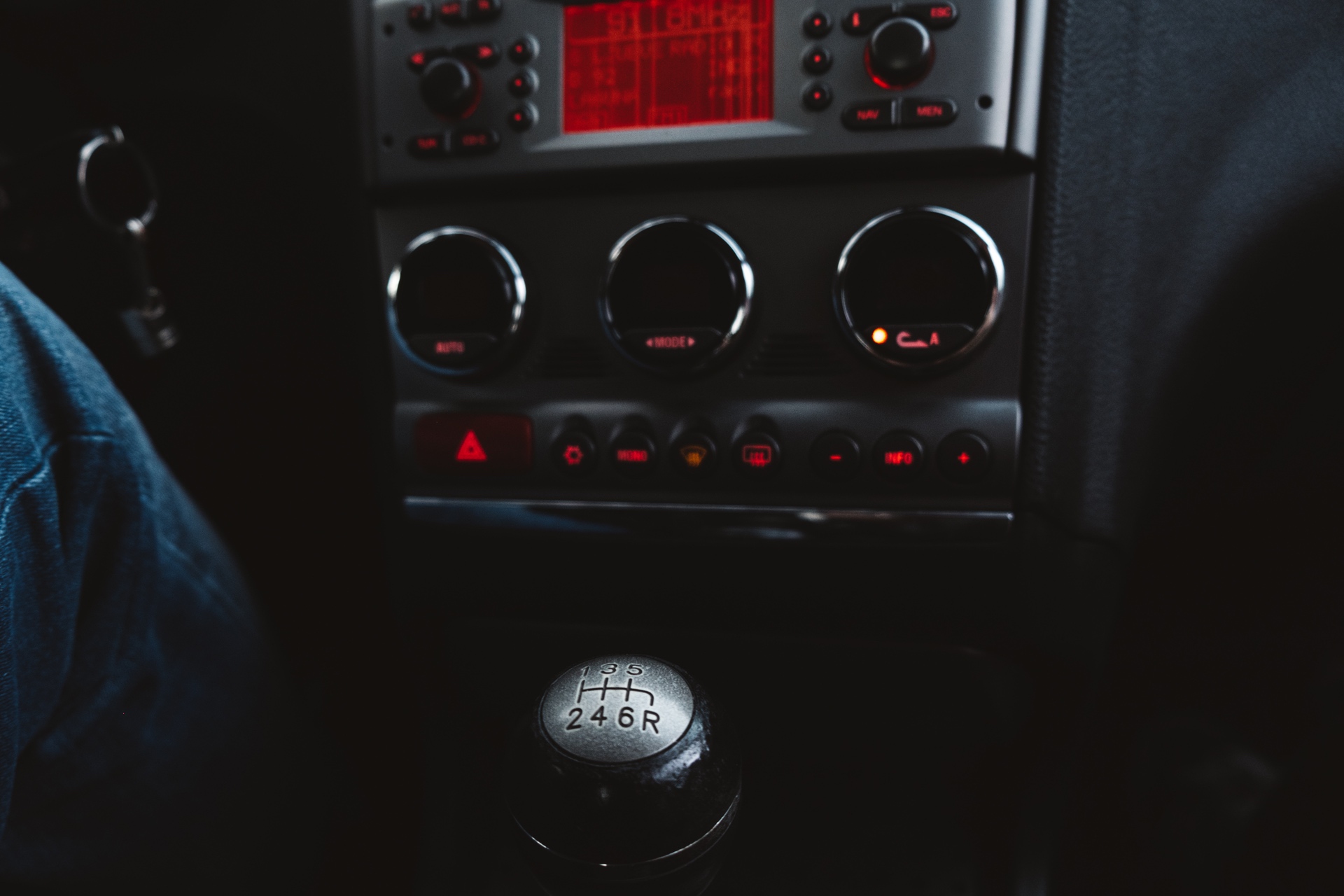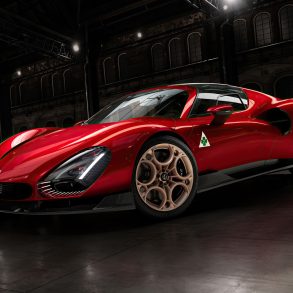When you think of a company like Alfa Romeo, which boasts a century of creating legendary sports cars, the 156 GTA is probably not the first to cross your mind. Sure, it isn’t the most recognized sports car coming from the fabled Milanese company, but it is an important chapter in Alfa Romeo’s 21st century history.
By digging into its origins, we’re here to see what makes this front-wheel drive Alfa Romeo so special and why it is worthy of the exclusive GTA badge.
Background & Development of the Alfa Romeo 156 GTA
GTA was a denotation so seldomly used in Alfa Romeo’s history that its mention has almost mythical properties. It stands for Gran Turismo Alleggerita, or lightened grand tourer and was applied to a selected few Tipo 105 Giulia coupés during the 1960s and the 1970s.
For these featherweight race cars, Alfa Romeo’s Autodelta racing outlet used aluminum body panels and magnesium wheels, clear plastic instead of glass as well as other tricks to keep them lighter, nimbler and quicker than the competition.
Upping the engines’ performance too, GTA Giulias were formidable contenders on race tracks throughout Europe and prestigious road cars for the most daring Alfisti around.
Alfa Romeo lived through its golden post-WW2 era rather gloriously. But the late 1970s and the 1980s took its toll on the company, leading to Fiat’s takeover in 1986.
Under Fiat, Alfa Romeo was thoroughly transformed, and in 1992, the rear-wheel drive 75 was eventually discontinued in favor of the 155 sedan, marking the penultimate step towards a complete switch to front-wheel drive production models in 1994, when the aging Duetto was replaced by the Tipo 916 Spider.
Even with its identity shaken down to the core and abandoned for survival’s sake, Alfa Romeo didn’t ever lose its beauty. In the second half of 1990s, though, it needed a new forerunner to break away from the wedge design language.
That car was in development from 1993 and was internally known as Tipo 932. Three creative houses applied for the new design: Giugiaro’s ItalDesign, Pininfarina and Alfa Romeo’s own Centro Stile with Walter de Silva.
In 1997, the Milanese company presented a new compact sedan named 156. Walter de Silva penned a modern, delicate design with a pinch of Tipo 105 Giulia cues and an unmistakable Alfa Romeo DNA.
The 156 was an instant hit, winning the 1998 European Car of The Year by a landslide. It put Alfa Romeo back in business in great style.
Under the beautifully sculpted sheet metal, the engine bay could accommodate a transversely mounted Busso V6, and being so, the 156 displayed potential for a performance variant. The development of the range-topping 156 GTA was carried out in-house with inputs from engineers at Maserati.
At the time, the European market was populated by a few V6-powered front-wheel drive performance cars like the Mondeo ST, Opel/Vauxhall Vectra GSi. But despite their performance, these cars couldn’t offer what Alfa Romeo did: style, charm and a sense of exoticism.
Indeed, the 156 GTA not only felt, looked and sounded more exotic—but with the price being the equivalent of $50,000, it really was in a league of its own.
The Alfa Romeo 156 GTA debuted at the 2001 Frankfurt Motor Show alongside the Busso-powered 147 GTA hot hatchback, Alfa Romeo’s answer to Volkswagen and its Golf R32.
Between the introduction at the 2001 Frankfurt Motor Show and 2005, Alfa Romeo produced only 1,973 sedans and 1,678 sport wagons. A small portion of both was offered in RHD, making them some of the rarest modern day Alfa Romeos.
Given that Fiat pulled the Alfa Romeo brand from North America in 1995, the 156 GTA never got to North America—but weirdly enough, it was officially on sale in Australia.
At the 2002 Bologna Motor Show, Alfa Romeo presented a GTAm concept car with an 300 hp 3.5-liter Busso V6. But it sadly never reached production, just like the Autodelta Sportwagon GTA 3.5 shown in Geneva in 2005.
Now, let’s look deeper into this impossibly handsome sports sedan and see exactly what it had going for it.
Chassis, Body, & Interior of the Alfa Romeo 156 GTA
Just like its direct predecessor and a number of cars in Fiat’s family, the Alfa Romeo 156 was built on the Tipo 3 platform, thoroughly modified to make the 156 a unique place in the range. Walter de Silva’s sleek coupe-like bodywork with concealed rear door handles complemented the smartly engineered underpinnings perfectly.
In improving the aerodynamics for the 156 GTA, designers took the cultured approach, focusing on the underbody section. To reduce body lift, this car features an underbody lift-reducing splitter doing the aerodynamic work of a trunk-mounted wing without compromising the car’s perfect silhouette in the process.
To distinguish itself from the rest of the range, the GTA model was graced with an unique functional body kit as well. The front splitter got three massive intakes to feed the uprated Busso V6 with fresh air, and the rear also got a distinctive bumper with air extractors.
The side skirts also got wider, contributing to the car’s downforce. In addition to generating more downforce, the 156 GTA had a drag coefficient of 0.30, lower than the base model’s 0.31 cd.
Even though Giugiaro’s ItalDesign gave the mass produced 156 a substantial facelift in 2003, the GTA model stayed true to de Silva’s original design throughout production.
A kerb weight of 3,108 lb (compared to the 2,712 lb of the base model) meant that the 156 GTA wasn’t exactly a lightweight car, though it was lighter than other V6-powered models in the range.
With key bits of interior changed to further strengthen the bond between original GTA cars and their modern day resurrection, the cockpit was an ode to the carefree 1960s. The steering wheel was unique to the model and the seats were leather wrapped, stitched in a horizontal bar pattern, and offered increased lateral support.
Details like aluminum pedals, Peltro grey metalluro trim and ball-shaped 6-speed transmission further contributed to the car’s sporty character. The dashboard, already greatly inspired by the Tipo 105 and its bulging periscope-like dial casings, got new instrumentation, generously etched to 300 km/h and 9000 RPM.
Engine & Transmission in the Alfa Romeo 156 GTA
Like its mass produced counterparts, the 156 GTA was powered by a transversely mounted Busso V6—but for this special car, Autodelta did its bid to create a truly bespoke powerhouse.
The unit started off as an all-aluminum 24-valve 3.0-liter 60° V6 from the big 166 sedan and with redesigned pistons and crankshaft, Autodelta bumped the displacement to 3.2 liters. In addition to increased stroke, the GTA-spec Busso got revised intake and exhaust ports, a revised engine oil radiator, and a retuned Bosch Motronic ME 7.3.1 engine management system.
The end result was the output of 250 hp at 6,200 RPM and 221 lb-ft of torque at 4,800 RPM, all followed by a blaring Busso soundtrack. The top speed was electronically limited to 155 MPH.
In addition to being internally reworked, the powerhouse was also adequately decorated, featuring chromed ports and an inscription on the engine cover.
The 3.2-liter Busso was mated to six-speed transmission—and in addition to a classic stick shift, the 156 GTA could also be ordered with 6-speed Selespeed gearbox with the same gear ratio, offering a different driving experience thanks to shifting paddles placed behind the steering wheel.
Suspension & Handling of the Alfa Romeo 156 GTA
The series production 156 owed its exceptional handling to a double wishbone setup at the front and rear MacPherson strut configuration. For the GTA variant, the suspension got a complete overhaul, resulting in lower stance, wider track and a stiffer ride.
To achieve that, the engineering team reinforced the lower beams of the wishbones, installed a bigger anti-roll bar and stiffer shocks, and installed a specially designed steering wheel strut.
The rear suspension was thoroughly recalibrated too, with a bigger anti-roll bar, different attachment points, as well as stiffer shocks, springs and bushes.
In addition to a bespoke engine, steering was Alfa Romeo’s biggest point of interest when developing this car. At the time, Alfa Romeo 156 GTA boasted the most direct steering ratio among mass produced cars.
Autodelta reworked steering geometry, making a switch from 2.1 to 1.7 turns from lock to lock. The effort gave the 156 GTA more precision, offering its drivers a greater feeling of control and a sensation of driving a racing car.
This bit of prestige came at a price though, because the sports sedan had a notoriously big turning circle.
Brakes, Wheels, & Tires in the Alfa Romeo 156 GTA
Alfa Romeo offered the 156 GTA with a set of 17×7.5-inch aluminum wheels with the teledial design unique to Alfa Romeo cars of the era, all wrapped in 225/45ZR17 Michelin Pilot Sport specifically designed for this car.
During its production span, the Alfa Romeo GTA came equipped with two sets of brakes. Initially, it was fitted with 305mm ventilated steel rotors with twin-piston Brembo calipers in the front and 276mm at the back, but upon receiving customer and press feedback, the braking system was revised and the sports sedan got larger 330mm front rotors that could cope with stopping the nose heavy car more efficiently.
The Alfa Romeo 156 GTA As a Collector Car
When introduced, the 156 GTA was hailed for its charisma and all-round performance, becoming an instant classic.
Still, depreciation hit it hard and it spent years in obscurity, being hunted down only by Alfa Romeo devotees until recent years when it gained wider interest. That also meant an increase in price was unavoidable.
Today, a pristine Alfa Romeo 156 GTA can set you back upwards of $40,000—although there are less costly options around.
Legacy of the Alfa Romeo 156 GTA
By producing the 156 GTA, Alfa Romeo proved that a thoroughbred sports car can follow a formula different from the front-engine-rear-wheel-drive-transaxle one.
Despite not being a perfect Alfa Romeo by purists’ standards, the 156 GTA was an important stepping stone for the next generation of sports cars that brought the company back to its roots.
After the 159, Alfa Romeo reinvented itself and revived the rear-wheel drive sports sedan by presenting the Giulia and its high performance offsprings, the Quadrifoglio and the GTA/GTAm duo.
That being said, the Alfa Romeo 156 GTA occupies a unique niche in the brand’s history—forming a bond between the original and the contemporary GTA insignia.
All photos by Djordje Sugaris.

























I bought my GTA here in Australia 7 months ago for a bargain basement price – mainly as it needed a few things done to get registered in my home state (it still has some minor cosmetic tidy ups), but I absolutely love it. The look of surprise – and nods – you get from fellas in V8 Holdens and Fords when they hear that Busso soundtrack is priceless. When it gets above 4500rpm there is not a better sounding road car in the world. It’s my third Busso 156, and I never thought I’d get the chance to own one given only about 100 or so are known to have been imported new to Oz, and maybe only 4-5 came to my home state. I was fortunate to stumble on it at a local Italian car show and simply had to make an offer. It’s definitely the best car (of +25) I’ve owned over the last 35 years, and reckon it’ll be mine til I shuffle off this mortal coil. Makes a great daily driver and is an excellent foil to my 116 GTV coupe. All I need now is a 3.0L 75 Potenziata and I will be forever content.